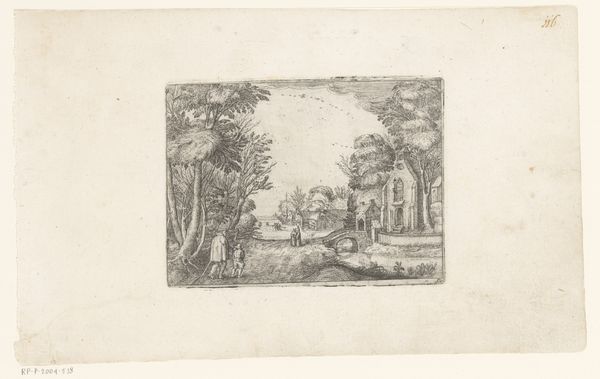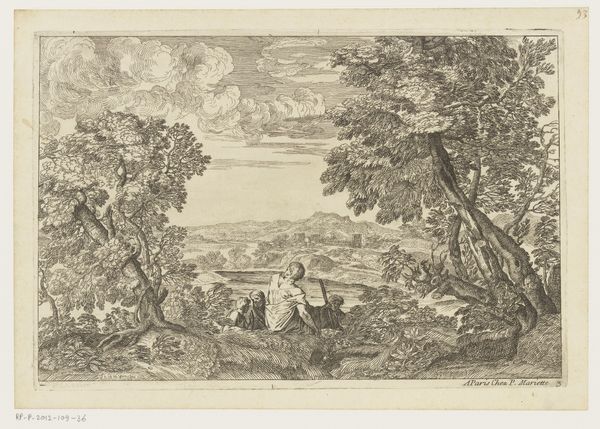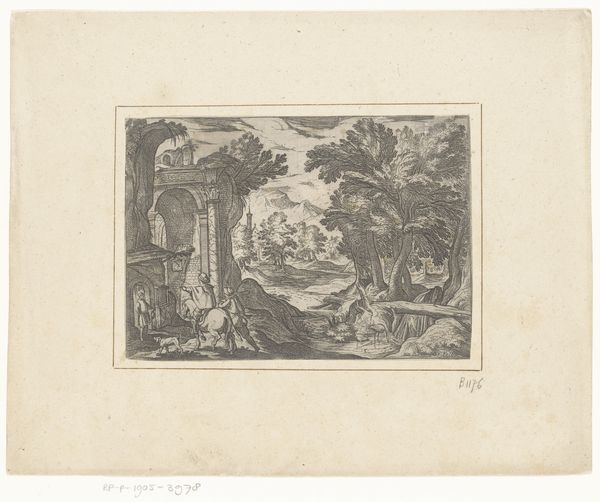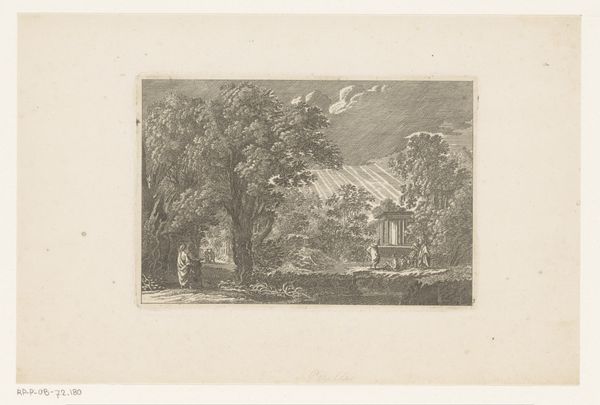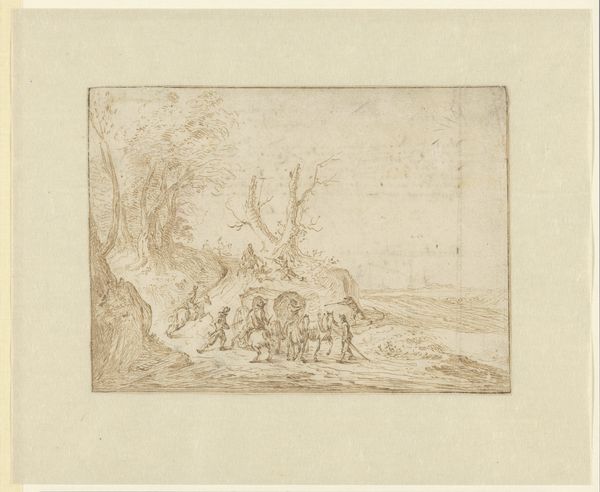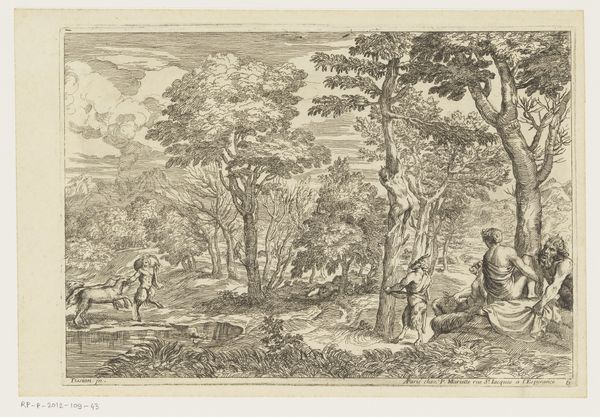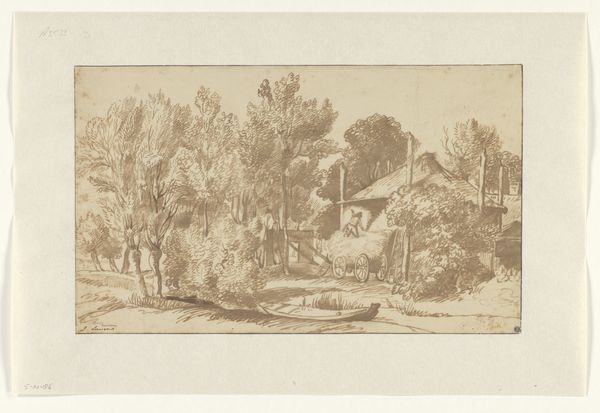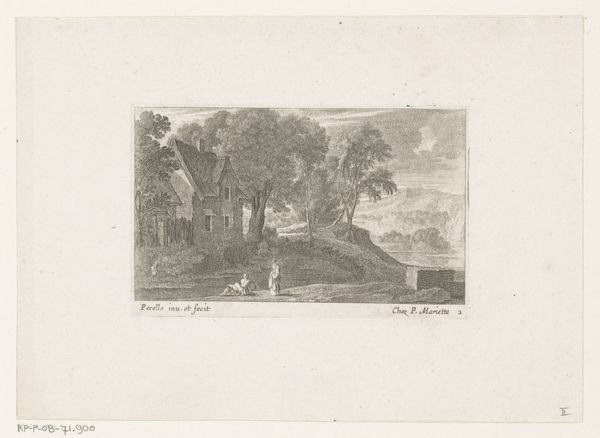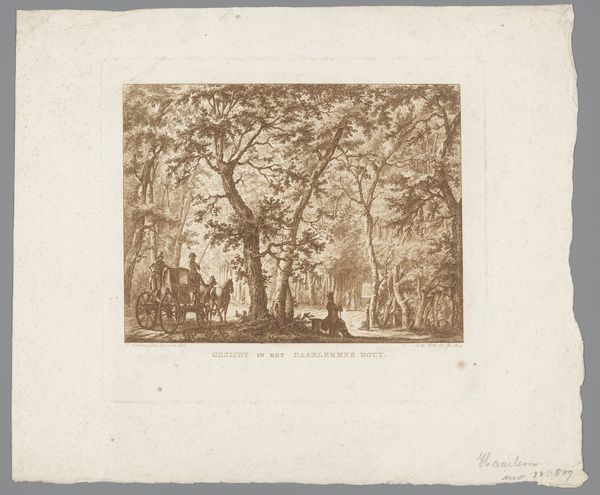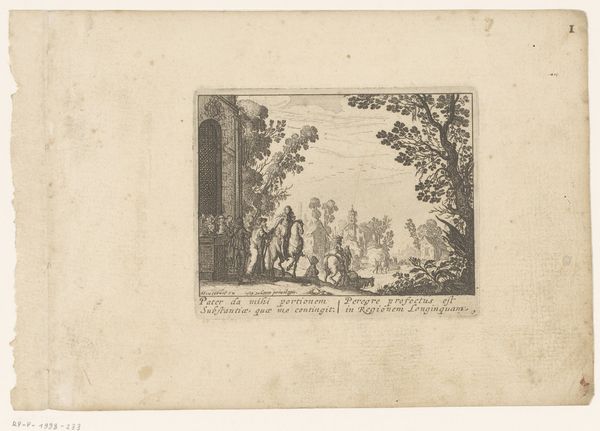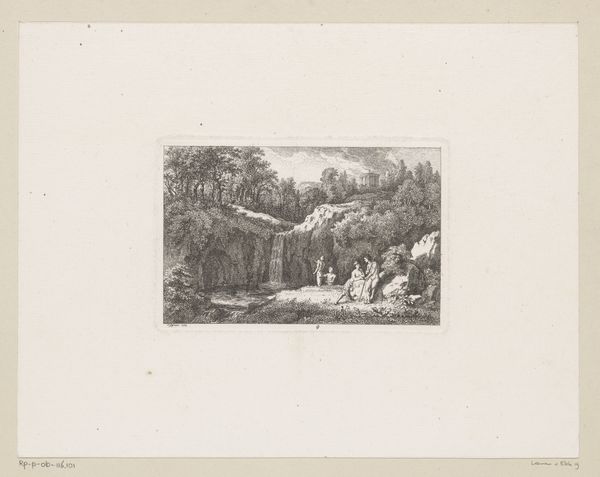
drawing, paper, ink, engraving
#
drawing
#
aged paper
#
toned paper
#
light pencil work
#
baroque
#
dutch-golden-age
#
ink paper printed
#
landscape
#
figuration
#
paper
#
ink
#
genre-painting
#
engraving
Dimensions: height 122 mm, width 181 mm
Copyright: Rijks Museum: Open Domain
Curator: This ink and paper drawing, dating from 1615 to 1620, is entitled "Return of the Prodigal Son" and is attributed to Hendrick Hondius I. It’s currently held at the Rijksmuseum. The scene, rendered with such delicate light pencil work, always moves me. Editor: It has this incredibly understated quality; the palette is muted, almost sepia, which gives it the feeling of a memory being recalled. The narrative feels both intimate and expansive, doesn’t it? Like a snapshot taken within a sweeping landscape. Curator: Absolutely. Hondius has positioned the biblical scene within an everyday Dutch landscape—a bustling town and pastoral scenes form the backdrop. It really personalizes the story; this could be anyone's son returning. You’ve got a landscape behind the foreground embracing figure—a reminder, perhaps, that these human dramas always unfold against broader social contexts. Editor: That’s a powerful reading. I’m immediately drawn to the two standing figures observing the embrace. They seem…unmoved, perhaps? A little judgemental even, lost in that detached patriarchal gaze of the period. What’s their role in this narrative, I wonder? They're positioned just so, it speaks volumes about wealth and status within Dutch society at that time. Curator: I think you may be projecting. Perhaps they’re merely contemplative, or even subtly joyful, masked by that stoicism expected of men then. The scene of familial warmth feels quite radical in the context of typical art production, because you almost want to cheer as father embraces the return. Editor: Maybe. I suppose the beauty of a piece like this is that it invites dialogue. And I am particularly fond of those playful touches! I can spot two donkeys being intimate, right in the background. Do they reflect some hidden aspect of human relations? Curator: Possibly. Hondius’ brilliance, for me, is how he elevates a deeply theological scene, humanising it with quiet intimacy and humor within the constraints of tradition. Editor: Exactly. Hondius' vision continues to spark questions around not just filial devotion, but what it means to exist within larger cultural, gendered, and class-based frameworks. Food for thought, indeed!
Comments
No comments
Be the first to comment and join the conversation on the ultimate creative platform.

